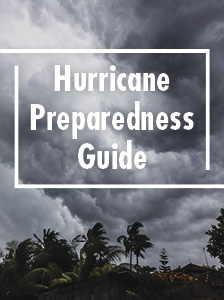Make no mistake, the amount of risk involved in your life insurance coverage will have a massive impact on the details of your policy, but as you anticipate your future needs, it’s key that you find a way to connect the dots between the risk associated with your particular case and the amount of coverage necessary to provide you and your family with financial protection and peace of mind.
So, before you make one more decision regarding your life insurance plan, let’s discuss how underwriting and your own wealth assessment are intertwined as well as how you can best prepare for your policy.

Understanding underwriting
Whenever a life insurance company contemplates taking on a new policy, an incoming application undergoes an evaluation that ultimately determines premiums and associated costs for a given individual. Based on a detailed risk assessment, this process is known as underwriting and may involve a wide variety of sources – factoring in variables such as age, medical history and lifestyle – before a conclusion is reached. For the most part, this is a painless process for those consumers looking to start a new insurance policy, but it can also spell disaster for people who carry with them overwhelming risk factors.
Normally, underwriting most commonly wreaks havoc on your life insurance policy when you either have a serious medical condition or are at a high risk of developing one. An extra cost or elevated premium may result for these individuals, leading some to feel that life insurance ultimately may not be a cost-effective course of action for them. In fact, some applicants may be flat-out denied coverage whatsoever, though this is far less likely. What’s important during this process is deciding how much life insurance you and your family need and being able to fight for that coverage.
How to assess your assets
One of the most popular questions we hear regarding life insurance is from consumers wondering how much coverage to purchase. Sadly, there’s no one-size-fits-all answer to this, as any conclusion you reach will undoubtedly be an intensely personal one closely tied to your family’s specific needs. We’ve discussed elsewhere the importance of taking stock of your financial situation, and as you prepare to apply for coverage, it’s more essential than ever that you gain a clear understanding of your own resources.
Doing so will keep you better informed of your coverage needs and will help you decide if your underwritten policy details (remember, most companies offer a no-commitment free-look period) are sufficient for your family. As a general rule, the recommended standard is to purchase coverage roughly ten times your annual income, allowing for a margin of error and the expected inflation rate. However, you might opt to complete a detailed needs analysis to get the full picture of your wealth assessment. Such a document would account for both short-term and long-term expenses, any liquid assets (i.e., those that can be quickly sold for profit) and anticipated costs for education and retirement in addition to lost income. By accounting for all of these various aspects of your family’s financial outlook, you can be armed with the knowledge of what you need out of your life insurance and better discover how to make those needs a reality.
Arguing for your policy
Depending on your associated risks, underwriting may hurt your chances of getting life insurance coverage at the rates you’re hoping for (or, in some cases, at all). This blatant disconnect with your insurance needs can be a sharp wake-up call, but that possibility is precisely why we advise you to go into your application with a clear understanding of what you want and need from your life insurance company. You might very well wind up clashing with a provider about their results, but that doesn’t mean you can’t contest it and create a strong argument in defense of your needs.
As we’ve indicated above, one of the best ways to do that is to do your research. Be ready to talk about whatever risk factors your provider may take issue with. You could pinpoint specific details in your medical history, for example, to clarify whether the assessed risk is elevated. When it comes to your wealth assessment, it’s a good start to complete a detailed needs analysis presenting a comprehensive view of your anticipated insurance needs. The bottom line is that you come to the discussion with talking points and a vision for how you can prove to be an asset to the life insurance company and vice versa.
Do you have any questions regarding the underwriting process and/or how to conduct your own wealth assessment? Share your thoughts in the comments section below!
Get an insurance quote today at AAA.com/QuoteNow.

















